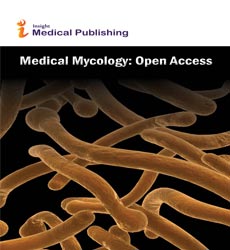Abstract
Survey bioremediation of chlorophenol by yeast fungi isolated from industrial wastewaters and oil
Introduction: The potential of various organisms to metabolize organic compounds has been recognized as potentially effective means of disposing of hazardous wastes. Among these compounds, phenolic compounds are toxic pollutants which belong to chlorophenols known as xenobiotic chemicals. They are extensively used as herbicides, insecticides, fungicides, wood preservatives, resins and lubricants. 4-Chlorophenol (4-CP) is one of the chlorophenols with a high solubility in water, so it is most detected in wastewater and can accumulate in their bodies biologically. Methods: In present study 14 Strains of bacteria and 5 Strains of Yeast and mold phenol degradation was purified from Shahid Tondgooyan petrochemical wastewater treatment unit was first carried out within about 60 days. Then, capability of the isolated microorganisms in biodegradation of 100 ppm 4-chlorophenol in presence of 2 and 5 g/l glucose as a growth substrate was examined. Two microorganisms, selected as superior species. The strains were designated TY1 and TY2 and identification was performed by sequencing of 18S rRNA and confirmed by morphological and biochemical characterization. Various physicochemical parameters are optimized for the maximum biodegradation of 4-CP, i.e. pH, temperature, initial concentration of phenol (100, 200 and 300 ppm) and carbon sources such as glucose (2, 5 g/l) concentrations. The phenol degradation was determined by the spectrophotometric method 4-amino antipyrine. Results: The results showed that 100% removal of 100 ppm by mixed culture of TY1 TY2:50/50 in presence of 2 gr/l glucose within 15 hours. Percentage of pure cultures in mixed culture had no significant effect on 4-CP removal efficiency however; initial glucose with lower concentration had higher 4-CP removal efficiency. Furthermore, the results of the sequencing showed that the isolates with the genus Trichosporon. Conclusion: The significance and impact of the study is the utilization of native yeast strains isolated from the waste water itself having potential for environmental bioremediation in petroleum refinery and petrochemical industries.
Author(s):
Atena Alirezaei
Abstract | PDF
Share this

Google scholar citation report
Citations : 164
Medical Mycology: Open Access received 164 citations as per google scholar report
Abstracted/Indexed in
- Google Scholar
- China National Knowledge Infrastructure (CNKI)
- Directory of Research Journal Indexing (DRJI)
- WorldCat
- Publons
- Geneva Foundation for Medical Education and Research
- Secret Search Engine Labs
Open Access Journals
- Aquaculture & Veterinary Science
- Chemistry & Chemical Sciences
- Clinical Sciences
- Engineering
- General Science
- Genetics & Molecular Biology
- Health Care & Nursing
- Immunology & Microbiology
- Materials Science
- Mathematics & Physics
- Medical Sciences
- Neurology & Psychiatry
- Oncology & Cancer Science
- Pharmaceutical Sciences
